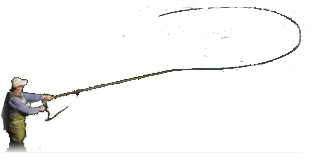I had the same question posed to me over on the VFB board, so I wrote Tom Mullin at Whiting about this question (he is the Chief Grader). I am on the Pro Team and am a personal friend of Dr. Tom, so I would expect them to give me the straight skinny.
And here it is- straight from the Chief Grader. The wholesale prices that Whiting charges dealers have gone up only slightly in the recent past, and that's to cover the cost of business increases, such as chicken feed and employee raises. Whiting can't control what the retailer charges, although they have suggested retail prices. Fly shops have had, like everyone, a tough time making it because of the economy. Some shops are trying to cash in on the craze by marking up the saddles they know that the hairdressers want. It's a survive now-pay later gamble, but it won't matter if they don't make it at all. Whiting had a very tough time during the avian flu crisis, creating a feather embargo had stalled all foreign sales. That's over now, and a new economic crisis has taken its place.
I am fortunate that I have hundreds of capes and saddles, almost all Whiting, collected over the years The only other skins I have are Conranch, as he has excellent birds with lots of soft-hackles with the whole skins. I have about 50 Whiting Winger capes, and I'll never part with these, as they are a discontinued line. I guess I also have tucked away some antique dyed Chinese necks dating back to the 50s and 60s that i got at an estate auction. Almost worthless for tying feathers, but neat to have for nostalgia. I also have some pre-Whiting Hoffmans as collector's items.
There's lots of talk about breeders, and everyone can say what they want. But unless you visit the operations of the breeders don't talk, unless it's just to discuss the qualities of their feathers, because that's all you can tell. I've visited Whiting Farms about 6 times now, and it's 400 miles from my house- a long drive. But it's worth it. It's pretty awe-inspiring the level at which Dr. Tom has brought his chicken breeding and husbandry. There's nothing elaborate, just ga-gillions of well-cared for birds being genetically controlled every step of the way. He maintains spare farms to protect the gene-pools from avain flu disaster (or other diseases), and has taken other measures to ensure the survival of his lines.
I spoke with Dr. Tom at the beginning of the extension phase, and he said he was ramping up a line of Euro hackles for dying so that the tying feathers wouldn't be impacted. He said his first duty was to the tiers, but that he also needed to serve a new market that would bring in some income. I can't fault that thinking. He raises hundreds of thousands of birds every year for the world fly-tying market, so his costs and risks are high. The cree midge super-saddle that I posted, signature grade, was a one-in-two-million bird. It's a treasure.
I've been tying flies since I was a child, and have seen the rise in hackle quality over the decades. What we pay for a cape today is a pittance if one considers the useability and quality of the hackles. I tied commercially for awhile 30 years ago, and it was rediculous how many capes I amassed that had the dry fly hackles stripped off and only long bugger hackles were left. I watched as saddles took the limelight as they got longer and finer with each generation. We eagerly awaited the next order of Hoffman grizzly saddles at the shop so we could ooo and ahhh over how many dry flies could be tied with one hackle, rather than using 2 hackles to get one decent dry fly, using the 'sweet spot'. Who remembers that? I remember the workshops we had for revising hackle-winding because the size of the stem was so small.
Now, I have Whiting saddles with 18" long dry fly hackles that may be a number 14 throughout it's length. I have genetic crees, and midge hackles, and variants, and Coq De Leons, and salt-water capes, and flat-wing saddles, and the list goes on. When I got my first Whiting super-saddles over a decade ago, I tied nothing but dry flies for 6 months- thousands of them, and gave them all away at the shows. It was such a joy tying with these hackles that I couldn't stop. Then I got my first Winger cape, and it started all over again. Then the Coq De Leon saddles came out for tailing, and I had to start all over again. I still look forward to dry-fly time and tying with genetic super-hackles. Whiting is not alone as all the breeders have done wonders with their genetic hackles. But Whiting owns 75% of the market share for a reason.
If you are on a low budget, I would advise getting some buddies together to do a saddle co-op swap, like we had over on the VFB site years ago. Worked very well for everyone.
Denny Conrad (Conranch) has not given into the hair-dressing craze an still has great deals- if he has the birds, as his production is limited.
You might write this all of as coming from Whiting Pro Teamer, and I can't help that. But don't over-react and shoot yourself in the foot because of rhetoric and heresay. Whiting is the producer, and there are 'middle men' between them and the tiers. If you want to get super saddle deals before the shops, employees, and guides get their hands on the cherry ones, you just gotta visit the farm and pick them out for youself from the thousands of bins, hundreds of saddles per bin. That's how I got mine.




 Reply With Quote
Reply With Quote